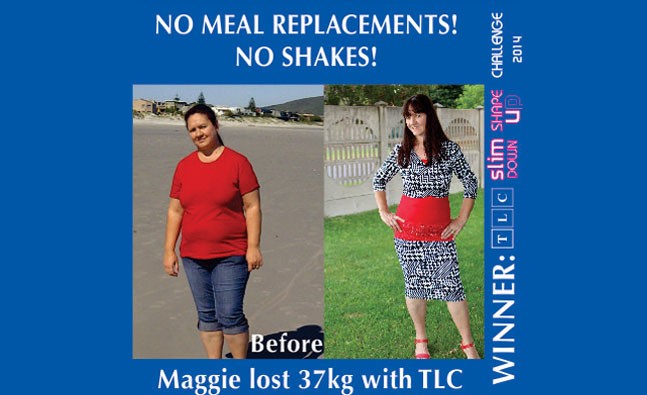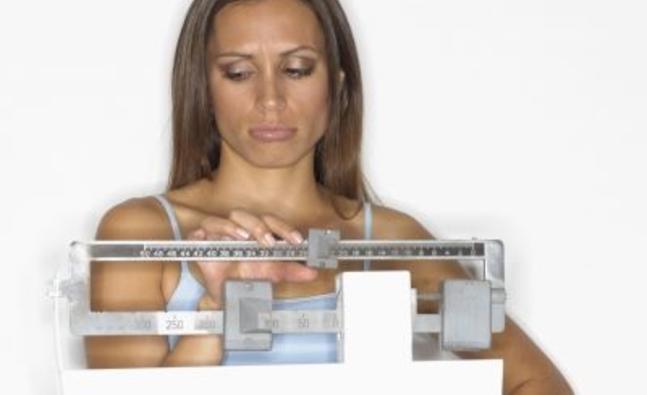12 Empowering Ways to Track Your Fitness and Weight-Loss Progress—Without Stepping on the Scale
Standing on the scale sucks. And not just because it can be the most frustrating thing ever (I swear, my earrings are just really heavy!), but because it doesn’t actually tell you that much about how healthy you are, according to a 2016 study out of the UCLA.
So what does? These 12 fitness, health, and weight indicators are much more empowering ways to track your progress.
1. Measure Your Hips, Thighs, or Biceps
One big issue with the scale is that muscle weighs more than fat, simple as that. But pound per pound, muscle takes up less space than fat, says exercise physiologist and dietitian Cassandra Forsythe, Ph.D., R.D. That’s why measuring your body parts can give you a more accurate picture of your body composition, and reward you for putting on muscle, rather than make you stare at the scale in disbelief, she says. So whip out the tape measure every week or month to see your progress.
2. Fire Up the Instagram Account
And start snapping pics of your food, along with captions on how you feel before and after each meal or snack. Use descriptive words like "energized," "sated," "grumpy," "deprived," "stuffed," or "bloated," says board-certified sports dietitian Georgie Fear, R.D., author of Lean Habits for Lifelong Weight Loss. Paying attention to the food you eat, and how you feel after each meal, will help you see how your relationship with food is improving. Sound a little too public? Just switch your feed to private.
3. Pop a Squat
The simple exercise go-to can tell you so much about your overall fitness, says Rachel Cosgrove, C.S.C.S. Stand in front of a mirror with your feet just more than shoulder-width apart, arms straight out in front of you, and squat away. See how you look both head-on and from the side. Now, ask yourself: Are you unable to lower your hips below your knees while keeping your heels down and arms up? Do your knees collapse in toward each other? Do you lean to one side? Does your torso fall forward? If you answered “yes” to any of these questions, check out these easy tips to improve your fitness, then test your squat in another couple of weeks.
RELATED: How Fit Are You? Test Yourself with These 6 Exercises
4. Consider Your Waist-to-Hip Ratio
Is “hips don't lie” still a thing? Because it should be. Your hip circumference, when compared to your waist circumference, can tell you a lot about your metabolic health. While excess weight around the waist points to abdominal obesity, research from the University of Oxford shows that butt, hip, and thigh fat is healthy, and actually lowers your risk of heart disease and Type 2 diabetes. To determine your waist-to-hip ratio, divide your waist circumference by your hip circumference. The goal is to have a WHR that’s 0.85 or lower, according to the World Health Organization.
5. Track Your Workouts
The beauty of having a regular workout program—and then tracking each of your gym sessions—isn’t just that you’re constantly progressing and getting fitter, it’s that you can literally see your wellness progress right there in your notebook (or workout app, if you’re new-school), says Sean C. Robinson, M.D., a sports medicine physician at Oregon Health & Science University. Oh, today I performed 20 pushups in a row! Last week, I could only eek out 18! It works with virtually any exercise: running, lifting, biking, swimming, you name it.
6. Feel Out Your Sex Drive
Yep, we're going there. The quality of your sleep, your workout, and even the number of veggies on your plate impacts your sex drive, says Fear. “Feeling a bit more randy is a good thing!" she says. It lets you know the other pieces of your health are in place. In a relationship? Try keeping track of your sex drive and hanky-panky with The Boyfriend Log app.
RELATED: Get Your Heart Pumping With Our Next Fitness Star's Ignite Routine
7. Download a Sleep App
You can’t seriously expect yourself to eat well or recover from your workouts (that is, if you even have energy to hit the gym) if you don’t get good sleep, says Fear. Plus, poor sleep increases your body’s levels of inflammation and contributes to the development of heart disease and Type 2 diabetes. “Keep track of how many hours and how well you slept,” Fear recommends. Many fitness trackers like FitBit can track sleep, while apps and gadgets like Sleep Cycle and Beddit are specifically designed to do it.
8. Keep a “Feel Good” Journal
Me time is so important for improving our stress levels, finding balance, and being healthy, says Anna Rossinoff, R.D., co-founder of Zest Nutrition. Her recommendation: at the end of each day, write down three things you did that made you feel good in your body. They can be big or small—going on a spa vacation or splurging on some workout threads—but by taking note of ways you nurture yourself each and every day, you can make sure that your health, wellness, and sanity are headed in the right direction.
9. Check Your Blood Pressure
It’s not the sexiest way to record your progress, but when it comes to your heart health, it's one of the most accurate. “Even if your weight doesn’t budge, your blood pressure can show a decreased risk of cardiovascular disease,” says Fear. What’s more, since your blood pressure is largely affected by your nutrition, exercise, and stress levels, it can give you a pretty good picture of your overall health. To check and track your blood pressure whenever, wherever, try downloading Blood Pressure Companion.
RELATED: I Tested 7 Different Fitness Trackers—at the Same Time
10. Track Your Daily Wellness Goals
“At the start of each day, write down three healthy goals you can accomplish in the next 12 hours,” says Rossinoff. It could be eating five servings of fruits and vegetables, hitting 10,000 steps, or prepping some healthy meals. At the end of the day, go back to those goals and see which ones you can cross off. As you see more goals on your calendar met, you’ll know you’re getting healthier.
11. Count Your Active Minutes
Or just your steps. Both, displayed through any number of handy fitness trackers, will give you insight into how much you’re moving every day and week. And that reveals way more than your weight does about your health, says Robinson. But more important than hitting a certain number of minutes or steps is improving those numbers. Be more active this week than you were last week, and you can just about guarantee you’re getting fitter.
12. Test Your Favorite Workout Every Year
Many of my healthy patients use birthday goals or tests to track their fitness, which is very effective,” says Robinson. “Every year, do a set of pushups, crunches, or run a mile, and track this data—trying to improve year over year.” But you don’t have to test on your birthday. You could sign up every year for a St. Patty’s Day fun run, a Thanksgiving Day cycling class, or an annual CrossFit competition.
-
Watch out for fruit juices when it comes to weight loss
-
A bad food thats great for weight loss
-
New years resolution statistics
If you half-heartedly swore off sweets/cocktails/Netflix bingeing when
-
Top 10 Fruits To Eat To Lose Weight Quickly
We have combed through the listings to give you some of the best fruit
-
Are acai berries good for weight loss?
-
TOP 10 TIPS ON HOW TO LOSE WEIGHT AFTER PREGNANCY
Top 10 tips on how to lose weight after pregnancy When a newbo
- DON'T MISS
- Dont let anyone dissuade your weight loss plans
- Cut down on sugar to prevent weight gain
- Healthy bites: Blueberries
- Top 15 Benefits and Uses Of Beetroot (Chukandar) for Skin, Hair and Health
- Crazy celeb diet tricks: The Cotton Ball Diet
- An easy trick to avoid work weight gain
- Reconsider your drink for weight loss
- Eat outside and prevent weight gain
- The Set Point of Losing Weight
- Tips for a balanced diet and weight loss plan: Shhhh … Don’t tell THEM




